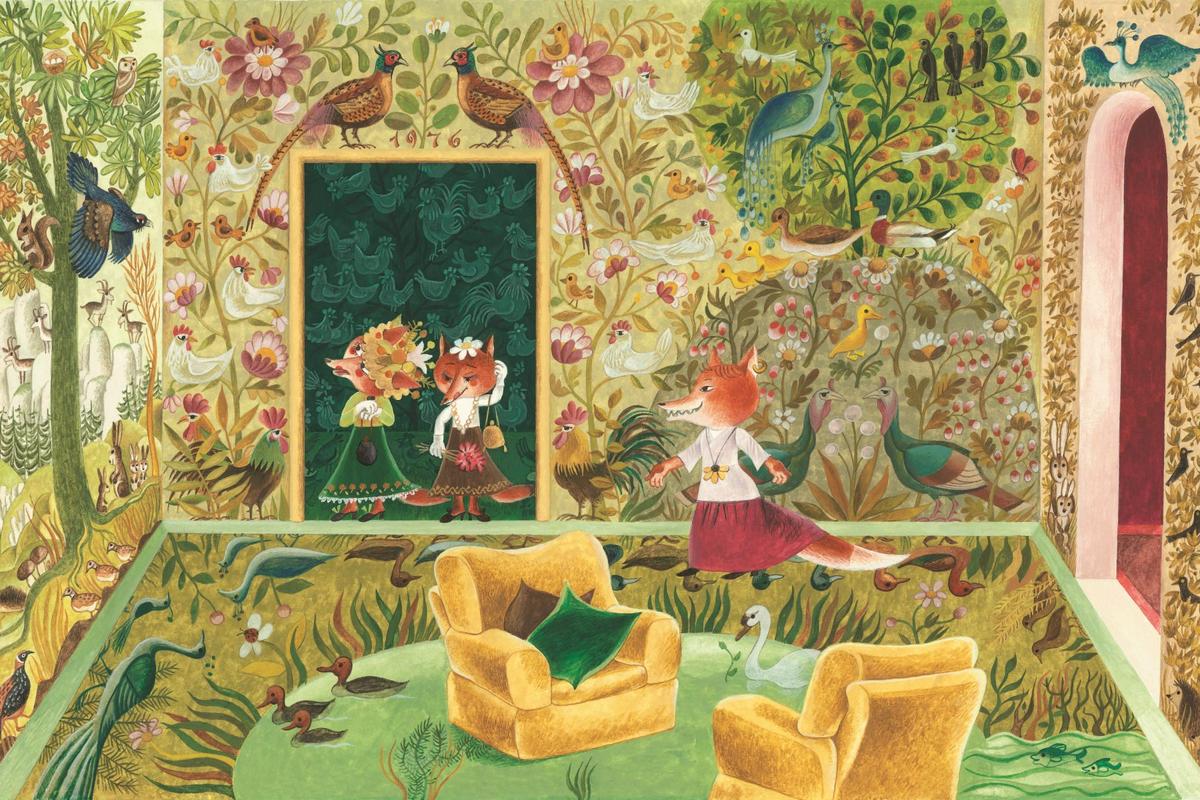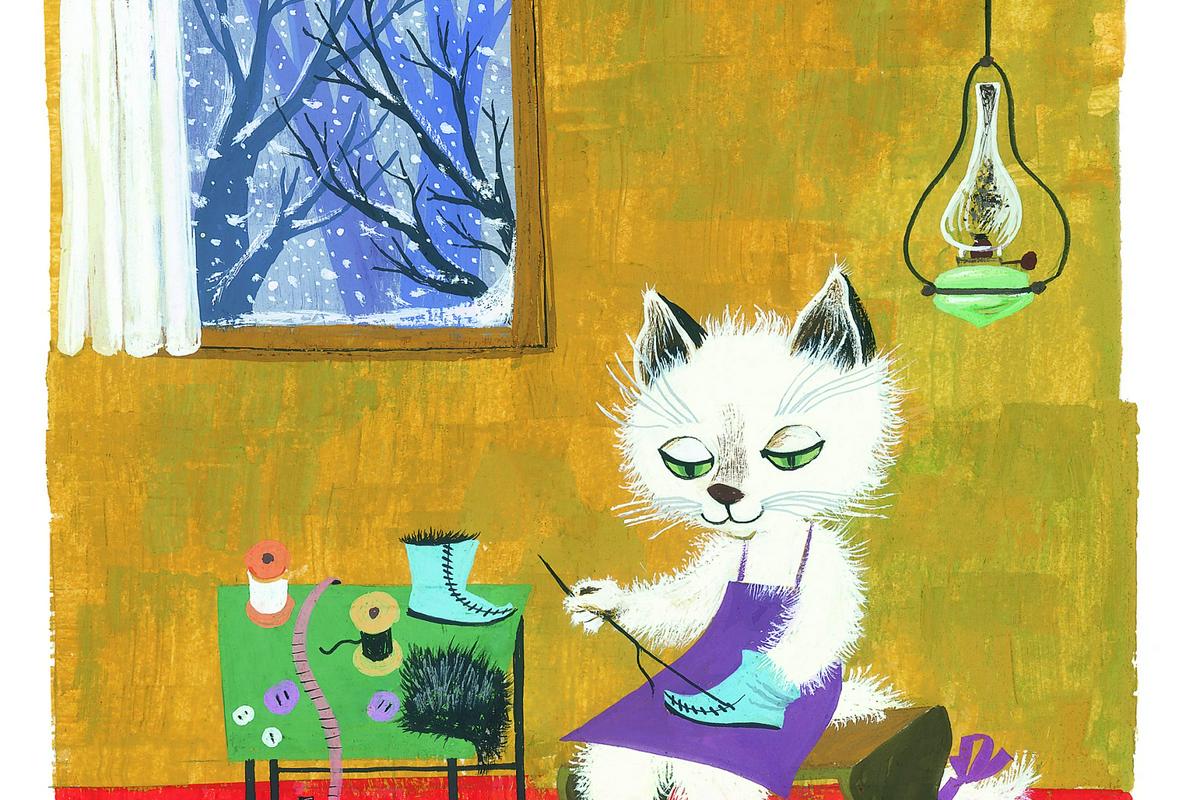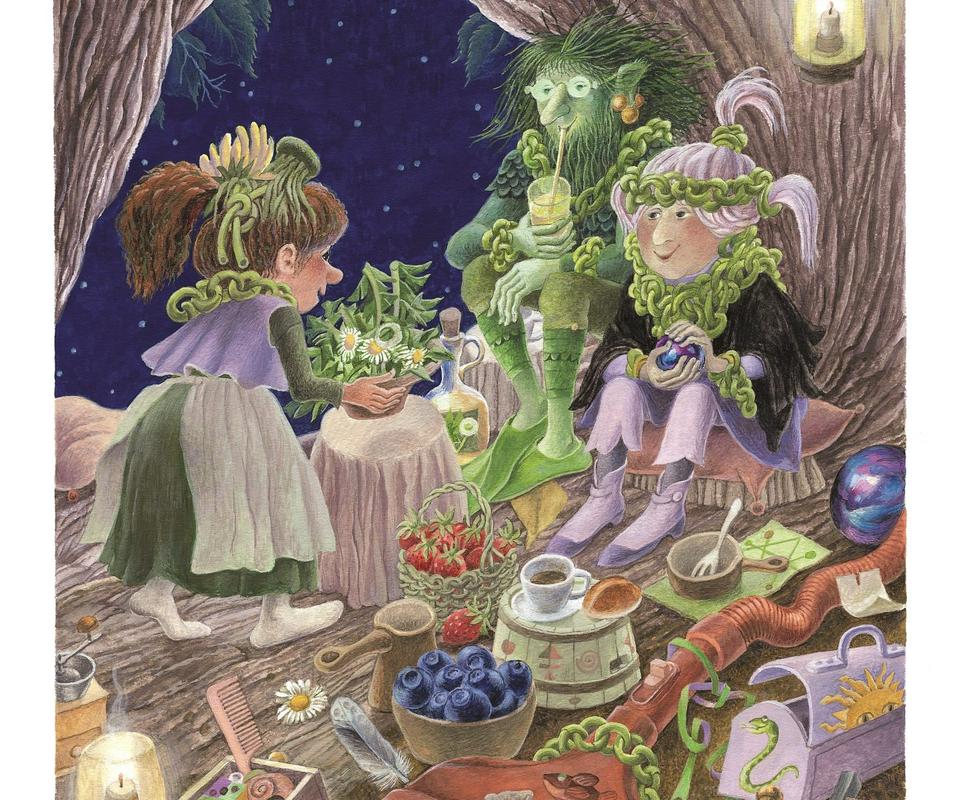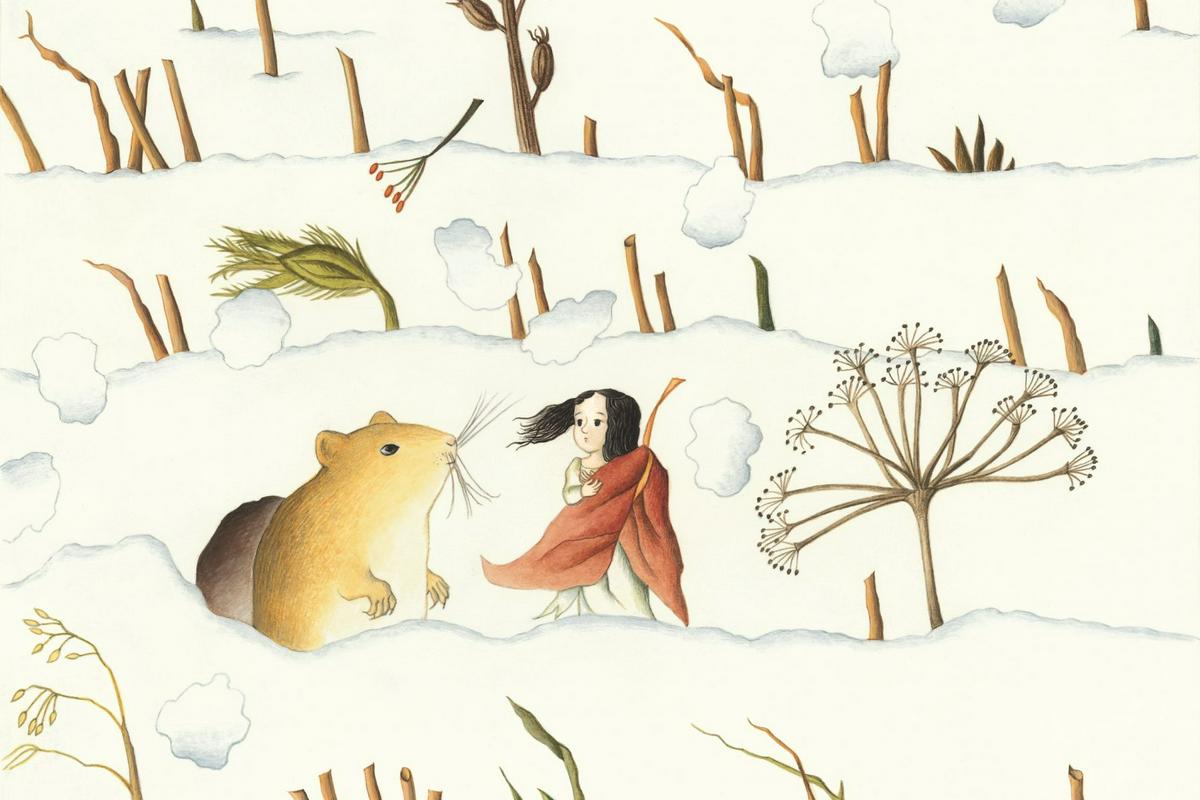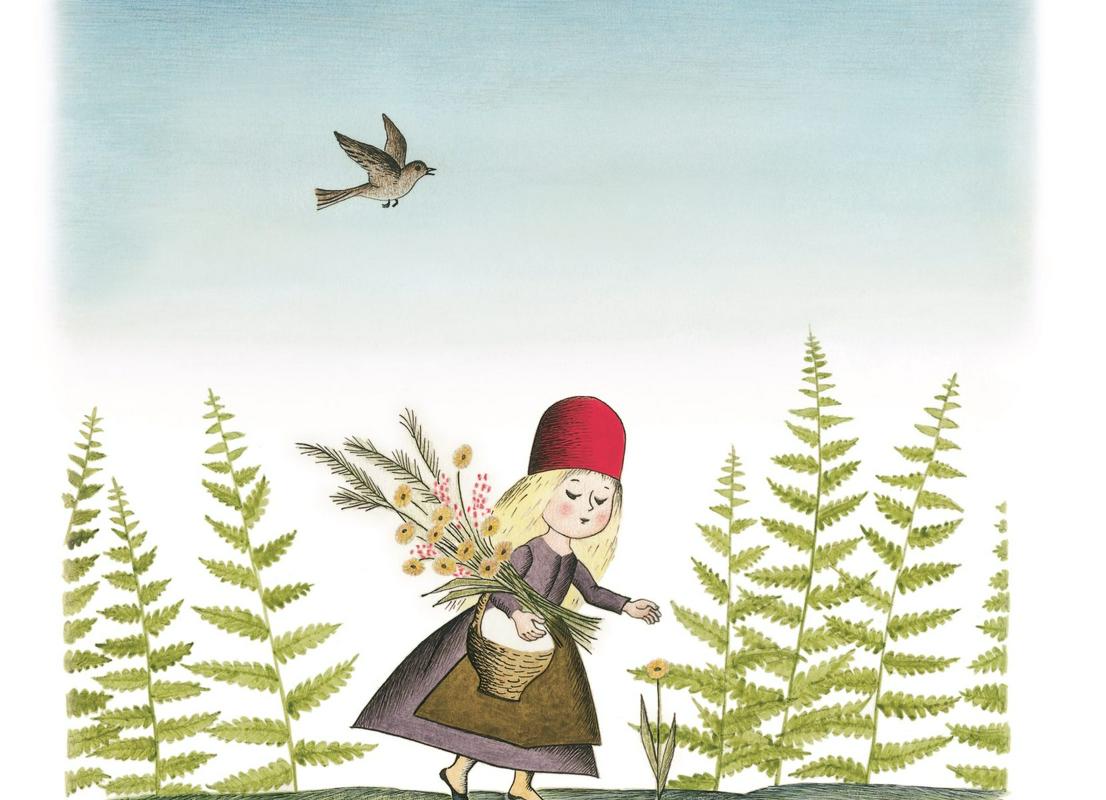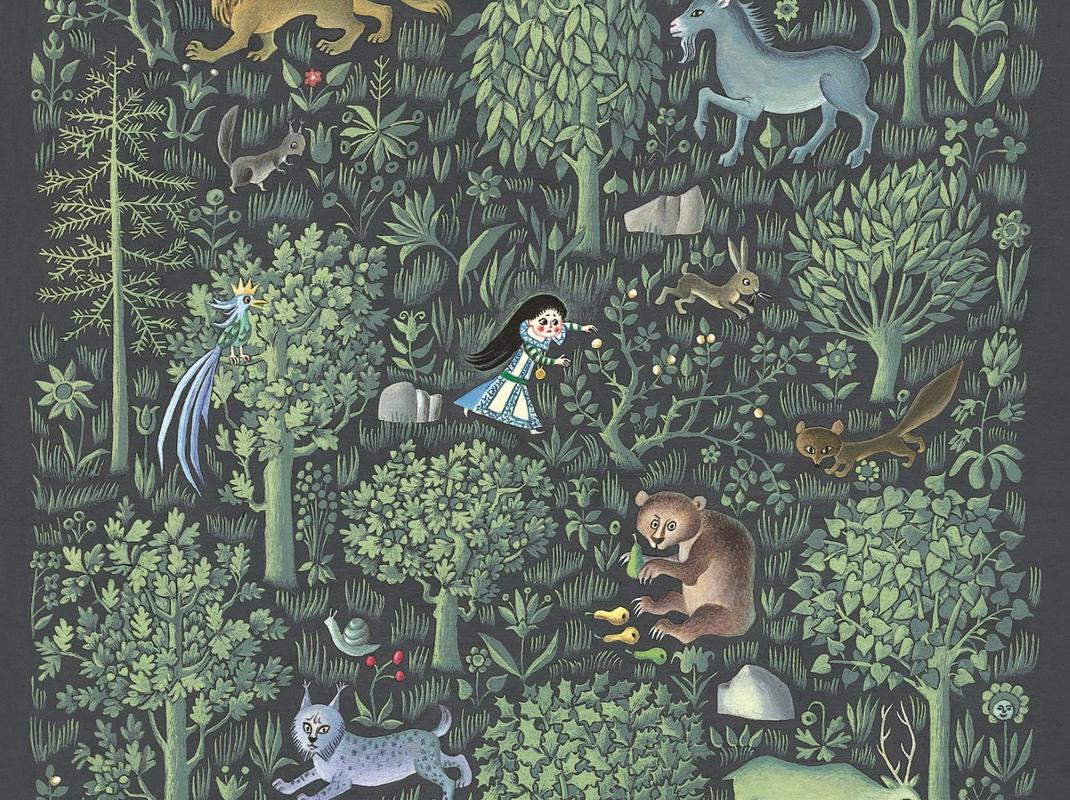
The Gallery of the Ljubljana Fine Artists Society is opening an exhibition, devoted to the two illustrators, connected by the same generation, exceptional talent, skilful mastery of the painter’s metier as well as by faith in the power of imagination, wrote visual art critic Judita Krivec Dragan.
Continuing the tradition of Central European and particularly Slovene story-telling
According to the critic's words, it is difficult to overlook a devotion to the Slovene story-telling tradition in the artistic opus of Ančka Gošnik Godec. She was unique in her interpretations of famous Slovene fairy tales, such as The Three Peas, The Little Shepherd, The Riverman, Grandmother's Tales, The Golden Bird, Harry the Hedgehog. Gošnik Godec continued the tradition of Central European and particularly Slovene story-telling. In her early large collections of tales, she was already painting fairytale beings with special attention and often in a playful way, beings that stem from a mythical consciousness and that are an important part of the national heritage: the dragon, the white serpent with a crown, fairies, the riverman, witches etc.
Well-known symbols of ancient content
Since the 1950s, numerous characters from fairy tales and songs in books and magazines, illustrated by Marlenka Stupica, have become well-known symbols of mostly age-old, even archetypal content to generations of picture book lovers. For this reason some fairytale heroes have kept the image that Stupica created. For us, Snow White by the brothers Grimm cannot be just about any girl, but rather Stupica’s girl with long black hair, red cheeks, surrounded by tiny playful elves in their typical red boots, wrote critic Krivec Dragan for the exhibition.
The text by Judita Krivec Dragan goes on to say that Ančka Gošnik Godec and Marlenka Stupica, "in their special way maintain distant ties with the rich cultural heritage of our wider territory. Through their innovative approaches, they keep the spirit of time and space alive even in contemporary fairy tales."




















































